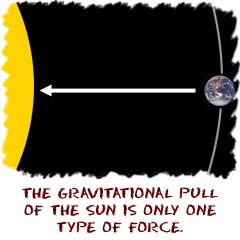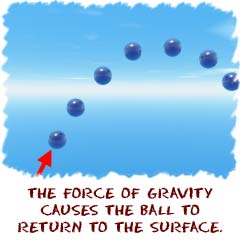3D shapes song
Friday, 9 December 2011
Fun facts about electricity
Fun Facts About Electricity
 Electricity travels at the speed of light - more than 186,000 miles per second!
Electricity travels at the speed of light - more than 186,000 miles per second!- A spark of static electricity can measure up to three thousand (3,000) volts.
- A bolt of lightning can measure up to three million (3,000,000) volts - and it lasts less than one second!
- Electricity always tries to find the easiest path to the ground.
- Electricity can be made from wind, water, the sun and even animal manure.
- Burning coal is the most common way electricity is made in the United States.
- One power plant can produce enough electricity for 180,000 homes.
- The first power plant - owned by Thomas Edison - opened in New York City in 1882.
- Thomas Edison didn't invent the first light bulb - but he did invent one that stayed lit for more than a few seconds.
- Thomas Edison invented more than 2,000 new products, including almost everything needed for us to use electricity in our homes: switches, fuses, sockets and meters.
- Benjamin Franklin didn't discover electricity - but he did prove that lightning is a form of electrical energy
Force and energy
Forces of Nature
 Forces are a big part of physics. Physicists devote a lot of time to the study of forces that are found everywhere in the universe. The forces could be big, such as the pull of a star on a planet. The forces could also be very small, such as the pull of a nucleus on an electron. Forces are acting everywhere in the universe at all times.
Forces are a big part of physics. Physicists devote a lot of time to the study of forces that are found everywhere in the universe. The forces could be big, such as the pull of a star on a planet. The forces could also be very small, such as the pull of a nucleus on an electron. Forces are acting everywhere in the universe at all times. Examples of Force
If you were a ball sitting on a field and someone kicked you, a force would have acted on you. As a result, you would go bouncing down the field. There are often many forces at work. Physicists might not study them all at the same time, but even if you were standing in one place, you would have many forces acting on you. Those forces would include gravity, the force of air particles hitting your body from all directions (as well as from wind), and the force being exerted by the ground (called the normal force). Let's look at the forces acting on that soccer ball before you kicked it. As it sat there, the force of gravity was keeping it on the ground, while the ground pushed upward, supporting the ball. On a molecular level, the surface of the ball was holding itself together as the gas inside of the ball tried to escape. There may have also been small forces trying to push it as the wind blew. Those forces were too small to get it rolling, but they were there. And you never know what was under the ball. Maybe an insect was stuck under the ball trying to push it up. That's another force to consider.
Let's look at the forces acting on that soccer ball before you kicked it. As it sat there, the force of gravity was keeping it on the ground, while the ground pushed upward, supporting the ball. On a molecular level, the surface of the ball was holding itself together as the gas inside of the ball tried to escape. There may have also been small forces trying to push it as the wind blew. Those forces were too small to get it rolling, but they were there. And you never know what was under the ball. Maybe an insect was stuck under the ball trying to push it up. That's another force to consider. If there is more than one force acting on an object, the forces can be added up if they act in the same direction, or subtracted if they act in opposition. Scientists measure forces in units called Newtons. When you start doing physics problems in class, you may read that the force applied to the soccer ball (from the kick) could be equal to 12 Newtons.
Force and energy
Forces of Nature
 Forces are a big part of physics. Physicists devote a lot of time to the study of forces that are found everywhere in the universe. The forces could be big, such as the pull of a star on a planet. The forces could also be very small, such as the pull of a nucleus on an electron. Forces are acting everywhere in the universe at all times.
Forces are a big part of physics. Physicists devote a lot of time to the study of forces that are found everywhere in the universe. The forces could be big, such as the pull of a star on a planet. The forces could also be very small, such as the pull of a nucleus on an electron. Forces are acting everywhere in the universe at all times. Examples of Force
If you were a ball sitting on a field and someone kicked you, a force would have acted on you. As a result, you would go bouncing down the field. There are often many forces at work. Physicists might not study them all at the same time, but even if you were standing in one place, you would have many forces acting on you. Those forces would include gravity, the force of air particles hitting your body from all directions (as well as from wind), and the force being exerted by the ground (called the normal force). Let's look at the forces acting on that soccer ball before you kicked it. As it sat there, the force of gravity was keeping it on the ground, while the ground pushed upward, supporting the ball. On a molecular level, the surface of the ball was holding itself together as the gas inside of the ball tried to escape. There may have also been small forces trying to push it as the wind blew. Those forces were too small to get it rolling, but they were there. And you never know what was under the ball. Maybe an insect was stuck under the ball trying to push it up. That's another force to consider.
Let's look at the forces acting on that soccer ball before you kicked it. As it sat there, the force of gravity was keeping it on the ground, while the ground pushed upward, supporting the ball. On a molecular level, the surface of the ball was holding itself together as the gas inside of the ball tried to escape. There may have also been small forces trying to push it as the wind blew. Those forces were too small to get it rolling, but they were there. And you never know what was under the ball. Maybe an insect was stuck under the ball trying to push it up. That's another force to consider. If there is more than one force acting on an object, the forces can be added up if they act in the same direction, or subtracted if they act in opposition. Scientists measure forces in units called Newtons. When you start doing physics problems in class, you may read that the force applied to the soccer ball (from the kick) could be equal to 12 Newtons.
Microbes
The Littlest Organisms
Let's study the wee ones of the world known as the microbes or the microorganisms. If you spend your life studying them, you would be a microbiologist. These are the smallest of the small and the simplest of the simple. Some of them, like viruses, may not even be alive as we currently define life.
What is a Microbe?
What makes a microbe? We suppose you need a microscope to see them. That's about it. There is a huge variety of creatures in this section. They can work alone or in colonies. They can help you or hurt you. Most important fact is that they make up the largest number of living organisms on the planet. It helps to be that small. It's not millions, billions, or trillions. There are trillions of trillions of trillions of microbes around the Earth. Maybe more.Calling all Microscopes
As with all of science, discovery in biology is a huge thing. While microbes like bacteria, fungi, some algae, and protozoa have always existed, scientists did not always know they were there. They may have seen a mushroom here or there, but there were hundreds of thousands of species to be discovered. It took one invention to change the way we see the world of microbes - the microscope. In 1673, Anton von Leeuwenhoek put a couple of lenses together and was able to see a completely new world. He made the first microscope. It wasn't that impressive, but it started a whole history of exploration. More important to us, scientists were eventually able to discover the cause and cure of many diseases.
It took one invention to change the way we see the world of microbes - the microscope. In 1673, Anton von Leeuwenhoek put a couple of lenses together and was able to see a completely new world. He made the first microscope. It wasn't that impressive, but it started a whole history of exploration. More important to us, scientists were eventually able to discover the cause and cure of many diseases. Too Many to Count, Too Small to Find
We'll give the big overview on the variety of microorganisms here. There is no simple explanation of a microbe besides the fact that they are small. The list goes on. Just remember that there is a lot of variety going on here.They can be heterotrophic or autotrophic. These two terms mean they either eat other things (hetero) or make food for themselves (auto). Think about it this way: plants are autotrophic and animals are heterotrophic.
They can be solitary or colonial. A protozoan like an amoeba might spend its whole life alone, cruising through the water. Others, like fungi, work together in colonies to help each other survive.
They can reproduce sexually or asexually. Sometimes the DNA of two microbes mixes and a new one is created (sexual reproduction). Sometimes a microbe splits into two identical pieces by itself (asexual reproduction).
Subscribe to:
Posts (Atom)























